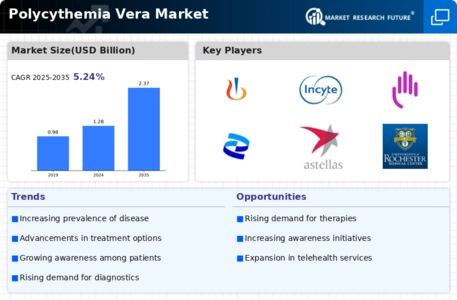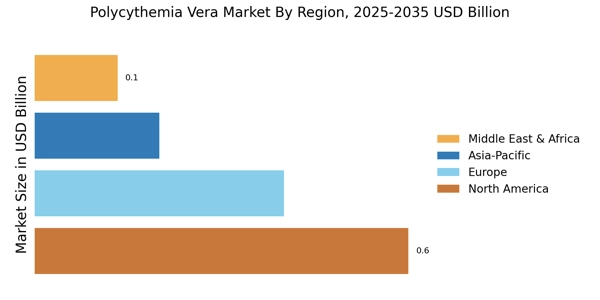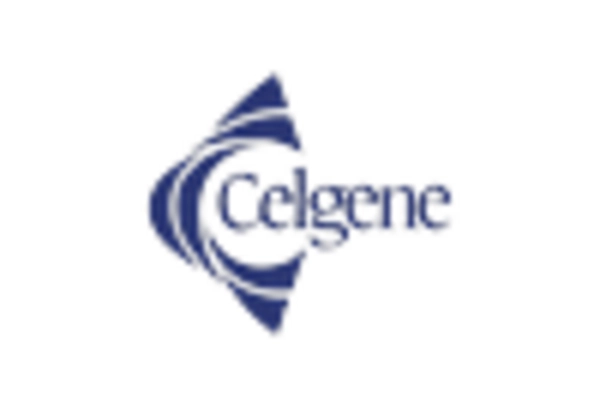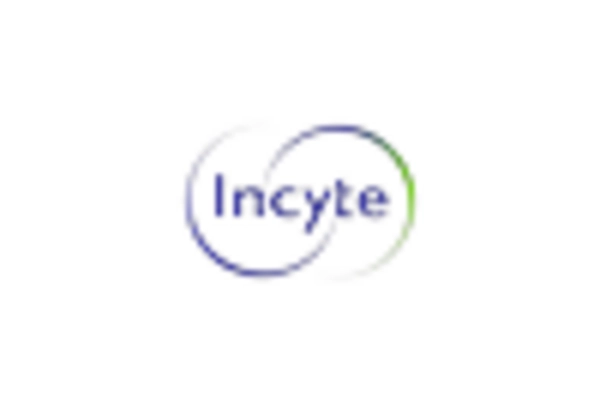Collaborative Research Efforts
Collaborative research efforts among pharmaceutical companies, academic institutions, and healthcare organizations are driving innovation in the Polycythemia Vera Market. These partnerships facilitate the sharing of knowledge and resources, leading to accelerated drug development and clinical trials. The pooling of expertise enhances the understanding of Polycythemia Vera Market and fosters the discovery of new therapeutic targets. As a result, the market is likely to witness an influx of novel treatment options in the coming years. Additionally, these collaborations often attract funding and investment, further propelling research initiatives. The synergy created through these partnerships is expected to significantly influence the trajectory of the Polycythemia Vera Market.
Emergence of Novel Therapeutics
The emergence of novel therapeutics is reshaping the Polycythemia Vera Market. Recent developments in targeted therapies and JAK inhibitors have shown promising results in managing the disease. For instance, the approval of ruxolitinib has provided a new treatment avenue for patients, leading to improved quality of life and disease management. The market for these innovative therapies is anticipated to expand significantly, with a projected growth rate of 8% over the next five years. This surge is driven by ongoing clinical trials and research aimed at discovering more effective treatment options. As new therapies enter the market, the Polycythemia Vera Market is poised for substantial evolution, catering to the diverse needs of patients.
Rising Incidence of Polycythemia Vera
The increasing incidence of Polycythemia Vera Market is a pivotal driver in the Polycythemia Vera Market. Recent estimates suggest that the prevalence of this myeloproliferative neoplasm is on the rise, with approximately 2.8 cases per 100,000 individuals reported annually. This uptick in cases necessitates enhanced diagnostic and therapeutic options, thereby propelling market growth. As awareness of the disease expands, more patients are likely to seek medical attention, leading to a higher demand for treatment modalities. Furthermore, the aging population, which is more susceptible to hematological disorders, contributes to this trend. Consequently, the Polycythemia Vera Market is expected to experience significant growth as healthcare providers adapt to meet the needs of this increasing patient demographic.
Advancements in Diagnostic Technologies
Technological advancements in diagnostic tools are transforming the landscape of the Polycythemia Vera Market. Innovations such as next-generation sequencing and advanced imaging techniques facilitate earlier and more accurate diagnosis of Polycythemia Vera Market. These advancements not only enhance patient outcomes but also drive the demand for specialized treatments. The market for diagnostic technologies is projected to grow at a compound annual growth rate of 7.5%, reflecting the increasing reliance on precise diagnostic methods. As healthcare systems integrate these technologies, the Polycythemia Vera Market is likely to benefit from improved patient identification and management strategies, ultimately leading to a more robust treatment framework.
Increased Awareness and Education Initiatives
Increased awareness and education initiatives are crucial drivers in the Polycythemia Vera Market. Organizations and healthcare providers are actively working to educate both patients and clinicians about the disease, its symptoms, and treatment options. This heightened awareness is likely to lead to earlier diagnosis and treatment, which can significantly improve patient outcomes. Furthermore, educational campaigns are fostering a better understanding of the disease among healthcare professionals, thereby enhancing the quality of care provided. As more individuals become informed about Polycythemia Vera Market, the demand for medical consultations and treatment options is expected to rise, positively impacting the market.


















Leave a Comment